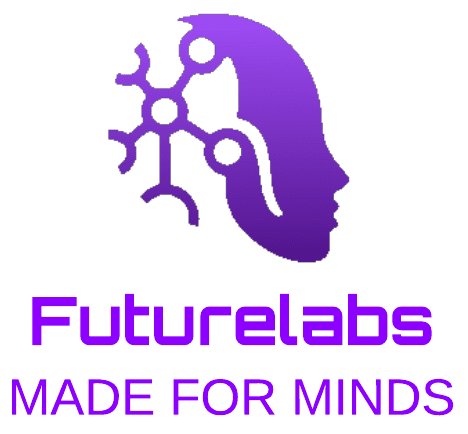We have reached a critical moment where inaction on education and workforce development could come at a steep cost to the global economy.
This challenge is intensified by a significant shift in how young people approach their future.
A global collaborative effort is needed to align workforce skills with the evolving pace of industries.
In an era dominated by artificial intelligence (AI), quantum computing, and sustainable technologies, the traditional four-year university degree is no longer considered a guaranteed pathway to career success.
The evidence of this transformation is compelling. The World Economic Forum’s Future of Jobs Report predicts that 65% of children entering primary school today will work in jobs that do not yet exist. In the United States, a Gallup survey cited by the Harvard Business Review in 2023 indicated declining enthusiasm for traditional college degrees. This trend is even more pronounced in the Asia-Pacific region — in Malaysia, for example, many young people aspire to become social media influencers, drawn by the promise of economic independence and digital success.
To adapt to this shift, many global companies are placing greater emphasis on skills over diplomas in workforce development. Industry initiatives like Google’s apprenticeship program prioritize practical experience, enabling participants from diverse backgrounds to compete for roles at leading companies such as Amazon and Microsoft.
However, preparing for this future requires more than technical skills. It demands culturally adaptable workers, with high levels of digital fluency and lifelong learning capabilities. Singapore’s education system provides a strong model, balancing technical training with intercultural competence. Graduates benefit from high employment rates and are well-equipped to excel in a global environment.
This transformation highlights the need for education systems to evolve at the pace of labor market demands. By integrating adaptability, intercultural competence, and digital fluency into curricula, we can create a workforce ready to navigate a rapidly shifting interconnected global economy.
Education for the Fourth Industrial Revolution
As the digital revolution reshapes the global economy, it is clear that new educational paradigms are essential to bridge the growing global skills gap. From Silicon Valley in California to the emerging tech scene in Nigeria, platforms like TikTok and YouTube — along with AI-driven industries — are creating opportunities that traditional education struggles to address.
In Mali, West Africa, Kabakoo Academies uses AI tutoring and social media platforms to enhance youth skills, resulting in a 44% income increase for participants in a market where more than 80% of jobs are informal. Similarly, South Korea is integrating AI into its national curriculum to equip students and teachers with emerging tech skills by 2025.
Germany’s dual education system, which combines apprenticeships with academic training, has become a global model, achieving a 92% employment rate among graduates. Meanwhile, Malaysia’s Ministry of Education plans to expand its hybrid classroom initiative to 400 more schools by 2025, with early findings showing a significant increase in job placement rates.
The Universal Urgency of Educational Reform
For example, South Africa’s youth unemployment rate remains around 30%, despite having a robust educational infrastructure. This underscores the need for a strategic blend of technical knowledge, entrepreneurial mindset, and sustainable development awareness.
In China, rising youth unemployment has given rise to the “rotten-tail kids” phenomenon — a term describing university graduates forced into low-paying jobs or reliant on parental resources. This reflects a stark mismatch between educational outcomes and labor market demands, emphasizing the need for urgent reforms that equip young people with relevant skills.
Governments are adopting innovative measures to boost workforce development. Malaysia’s National Training Week offers free upskilling programs in areas like green technologies and digital innovation. In the Middle East and North Africa, automation could affect up to 52% of jobs in countries like Qatar, making workforce transformation even more urgent.
Saudi Arabia’s Vision 2030 includes a $6.4 billion investment in technology and training, while the UAE’s National Coding Program aims to train 100,000 programmers, signaling the region’s commitment to closing the skills gap.
Forging Partnerships Between Industry and Academia
In light of current workforce development needs, collaboration between academic institutions and industry is no longer just a best practice — it is a necessity.
Malaysia’s Quest International University Global Partnerships Program has enhanced graduate employability through experiential learning opportunities. In India, the Indian Institutes of Technology (IIT) partner with tech companies to create innovation hubs, generating substantial R&D activity each year. The UK’s Early-Stage Prosperity Partnerships, supported by the Engineering and Physical Sciences Research Council (EPSRC), unite universities and businesses to tackle challenges like biodegradable polymers and aerospace materials.
These collaborations aim to integrate theoretical education with real-world experience, ensuring that both students and faculty remain aligned with industry needs.
Coordinating Global Educational Transformation
The transformation of education must be both innovative and inclusive. While digital solutions hold promise, equal access across socioeconomic groups must be ensured.
Key priorities should include:
- Inclusive policy frameworks that recognize alternative learning pathways and provide financial support mechanisms
- Public-private partnerships to fund both innovation and access for underserved communities
- Internationally recognized skill certifications with flexible, affordable alternatives
- Strategic investment in learning technologies, with an emphasis on accessibility and affordability
Preparing for the future of work will require a bold reimagination of how we educate and empower the global workforce. The cost of inaction — economic stagnation and social inequality — is far too high to ignore. If we embrace innovative and inclusive solutions today, we can unlock a more prosperous, equitable, and sustainable global economy for future generations.
License and Republishing
World Economic Forum articles may be republished in accordance with the Creative Commons Attribution-NonCommercial-NoDerivatives 4.0 International Public License, and in accordance with our Terms of Use.
The views expressed in this article are those of the author and not of the World Economic Forum.
Executive Chairman, QI Group of Companies
World Economic Forum Annual Meeting






0 Comments